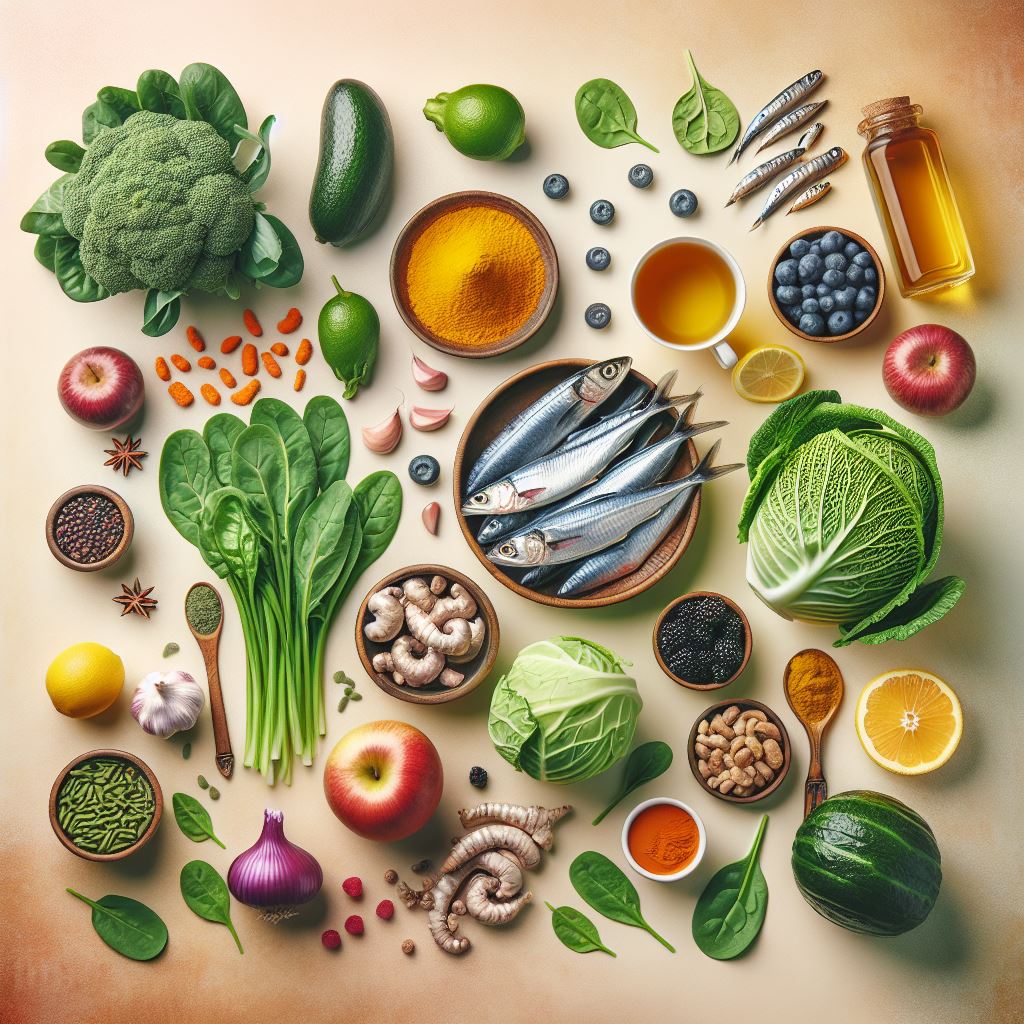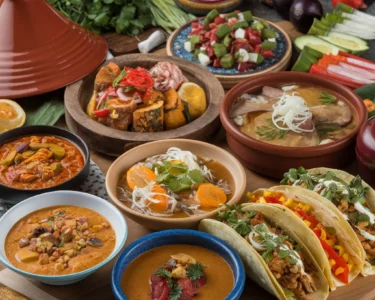Key Takeaway: You don’t need expensive supplements or fancy superfoods to fight inflammation. These 14 affordable foods can help reduce inflammation while keeping your grocery bill in check.
Table of Contents
Are you feeling the burn of both inflammation and high grocery prices? I’ve been there. As someone who’s struggled with inflammatory issues while trying to stick to a budget, I know firsthand how challenging it can be to eat healthy without breaking the bank. The good news? Fighting inflammation doesn’t have to cost a fortune.
In this comprehensive guide, I’ll show you how to stock your kitchen with affordable anti-inflammatory foods that pack a powerful punch against chronic inflammation. Whether you’re dealing with joint pain, digestive issues, or just wanting to improve your overall health, these budget-friendly options have got you covered.
What Makes These Foods Anti-Inflammatory Champions?
Before we dive into our list, let’s understand what makes certain foods anti-inflammatory. These foods typically contain:
- Antioxidants that fight free radicals
- Omega-3 fatty acids
- Polyphenols
- Essential vitamins and minerals
The best part? You can find these powerful compounds in many affordable, everyday foods.
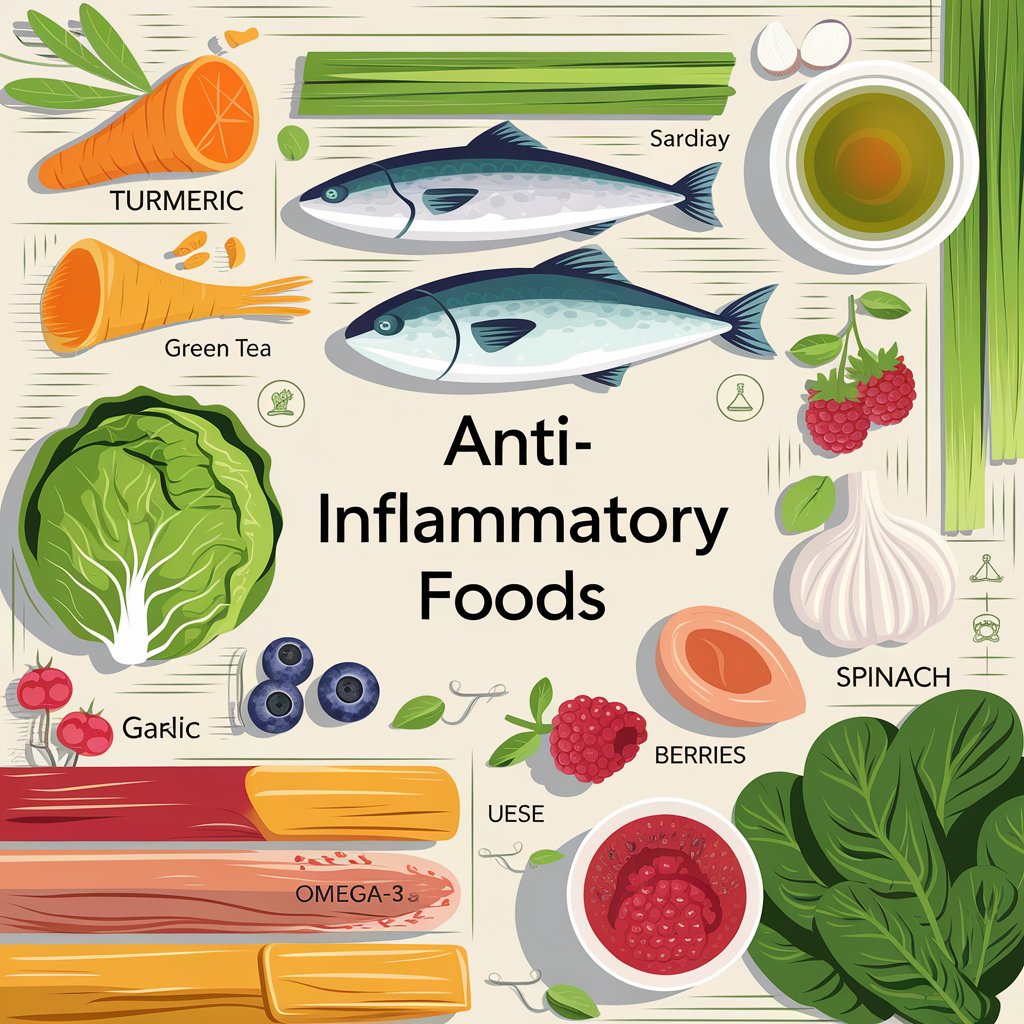
The Power-Packed List: 14 Budget-Friendly Anti-Inflammatory Foods
1. Turmeric (With a Black Pepper Twist)
Cost: $3-5 per pound
- Contains curcumin, a potent anti-inflammatory compound
- Pair with black pepper to increase absorption by 2000%
- Add to rice, smoothies, or make golden milk
Pro tip: Buy whole turmeric root when available – it’s often cheaper than powder and lasts longer.
2. Sardines: The Overlooked Superfood
Cost: $1-2 per can
- Rich in omega-3 fatty acids
- High in protein and vitamin D
- More affordable than salmon
- Sustainable choice
3. Green Tea
Cost: $0.10-0.15 per bag
- Contains EGCG, a powerful anti-inflammatory compound
- Can be reused for multiple cups
- Helps with weight management and blood sugar control
4. Cabbage: The Versatile Warrior
Cost: $0.50-1 per pound
- High in vitamin C and K
- Contains sulforaphane, a potent anti-inflammatory compound
- Can be used in multiple dishes: slaw, stir-fries, soups
5. Lentils: The Protein-Packed Pioneer
Cost: $1-2 per pound
- High in fiber and protein
- Contains polyphenols
- Versatile in soups, salads, and main dishes
| Nutrient | Amount per Cup | % Daily Value |
| Protein | 18g | 36% |
| Fiber | 15g | 60% |
| Iron | 6.6mg | 37% |
| Folate | 358mcg | 90% |
6. Garlic: Nature’s Medicine
Cost: $0.50-1 per head
- Contains allicin, a powerful anti-inflammatory compound
- Can be added to almost any savory dish
- Helps boost immune system
7. Frozen Berries
Cost: $3-4 per pound
- Rich in antioxidants
- More affordable than fresh berries
- Last longer in freezer
8. Sweet Potatoes
Cost: $1-2 per pound
- High in beta-carotene
- Contains fiber and vitamins
- Versatile: can be baked, mashed, or roasted
9. Carrots
Cost: $1-2 per pound
- Rich in beta-carotene and fiber
- Can be eaten raw or cooked
- Great for snacking and cooking
10. Ginger
Cost: $2-3 per pound
- Natural anti-inflammatory properties
- Can be used in tea, cooking, or smoothies
- Root can be frozen for longer storage
11. Pinto Beans
Cost: $1-2 per pound (dry)
- High in fiber and protein
- Contains antioxidants
- Very versatile in cooking
12. Spinach
Cost: $2-3 per bunch
- Rich in antioxidants
- High in vitamins and minerals
- Can be eaten raw or cooked
13. Oranges
Cost: $0.50-1 each
- High in vitamin C
- Contains flavonoids
- Great for snacking or juicing
14. Whole Grain Brown Rice
Cost: $1-2 per pound
- Contains fiber and minerals
- More nutritious than white rice
- Base for many meals
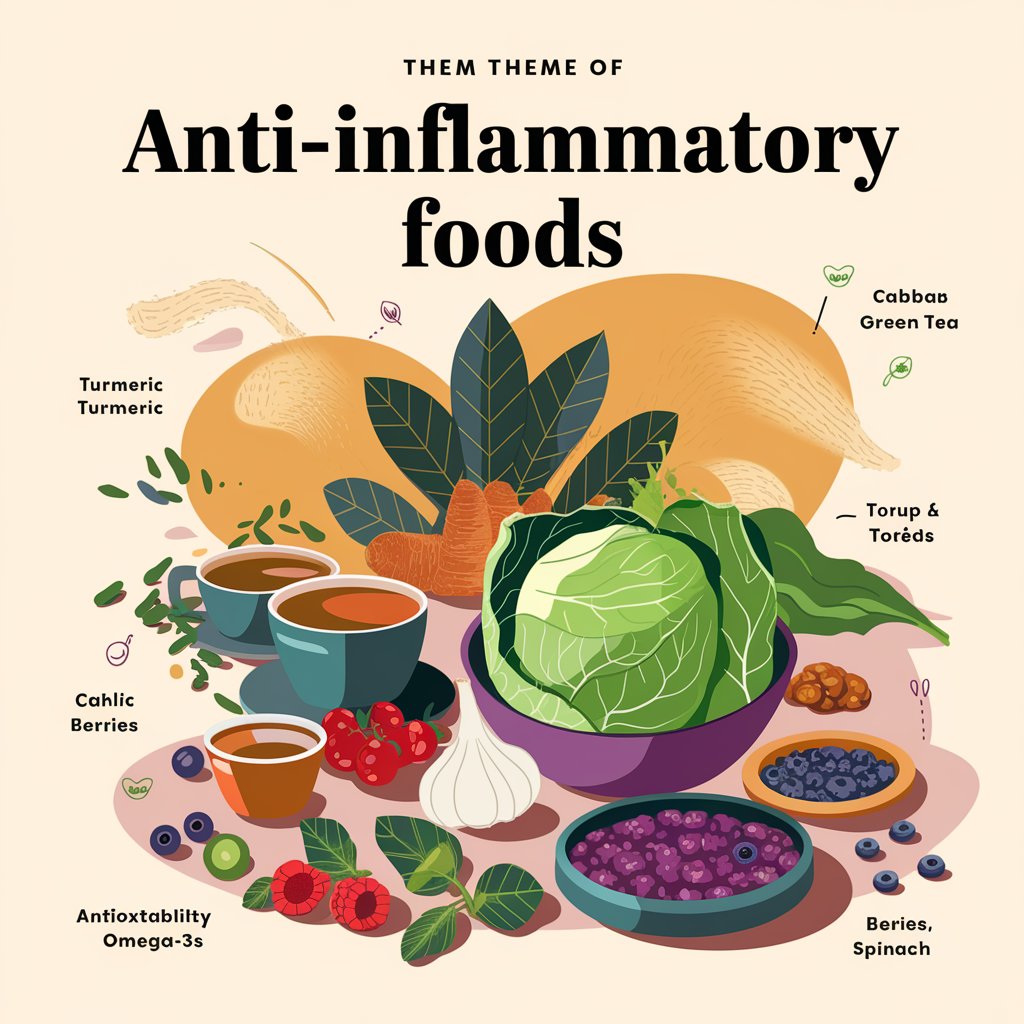
Making the Most of Your Anti-Inflammatory Foods
To get the maximum benefit from these foods while staying within budget, consider these tips:
- Buy in Season
- Purchase fruits and vegetables when they’re in season
- Look for sales and stock up on non-perishables
- Consider frozen options for out-of-season items
- Proper Storage
- Store properly to extend shelf life
- Use airtight containers
- Freeze extras when possible
- Smart Preparation
- Cook in batches
- Combine multiple anti-inflammatory foods in one meal
- Use leftovers creatively
Sample Meal Plan: A Day of Budget-Friendly Anti-Inflammatory Eating
Breakfast:
- Green tea
- Oatmeal with frozen berries and ginger
Lunch:
- Lentil and sweet potato soup
- Side of cabbage slaw
Dinner:
- Brown rice with turmeric
- Sardines with sautéed spinach and garlic
Snacks:
- Carrot sticks
- Orange slices
The Science Behind Inflammation
Inflammation is your body’s natural response to injury or infection, but chronic inflammation can lead to various health issues. These affordable foods help combat inflammation through different mechanisms:
- Antioxidants: Fight free radicals that cause inflammation
- Omega-3s: Help balance inflammatory responses
- Fiber: Supports gut health and reduces inflammation
- Vitamins and Minerals: Support immune function
Tips for Success
- Start gradually incorporating these foods
- Mix and match to find combinations you enjoy
- Keep track of how you feel as you add these foods
- Be consistent with your anti-inflammatory eating habits
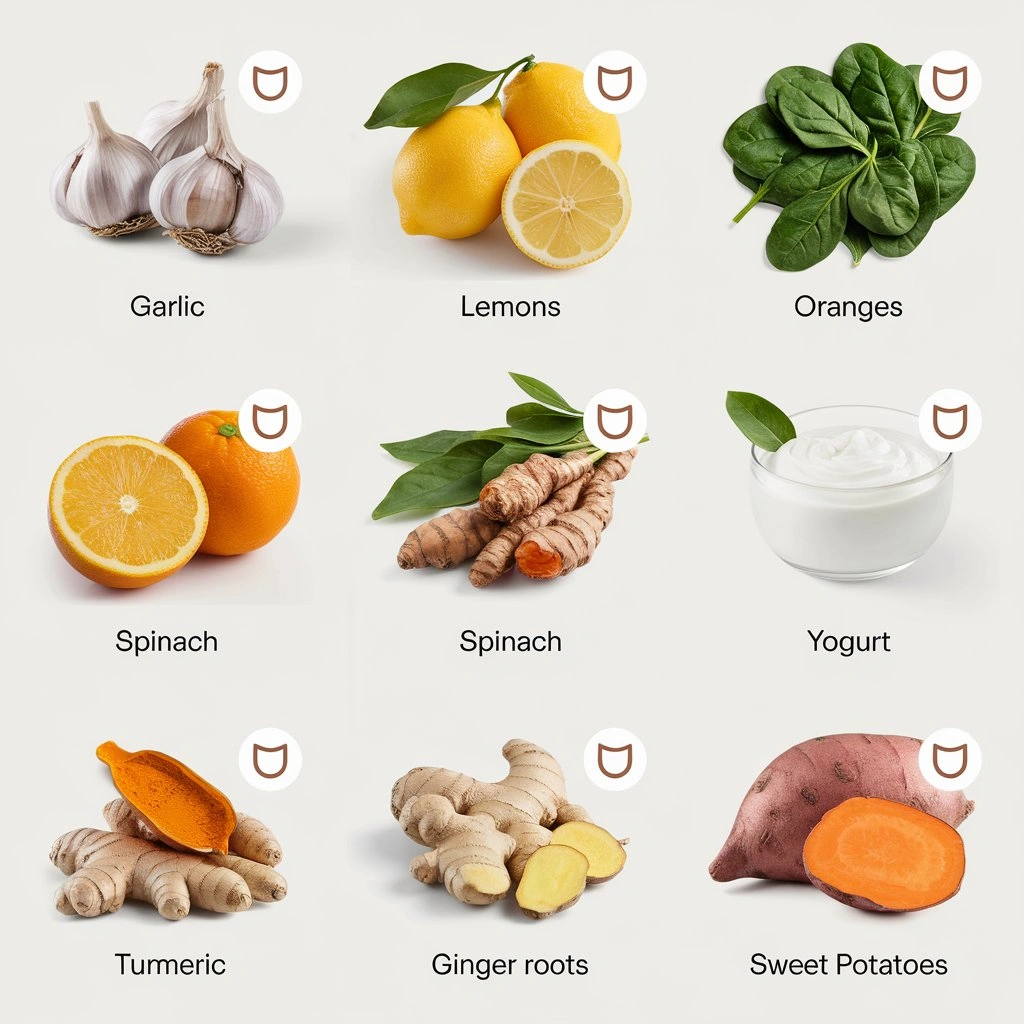
Budget-Friendly Shopping Tips
Want to make your anti-inflammatory journey even more affordable? Check out our guide on “10 Affordable Habits for a Healthier Lifestyle on a Budget” for more money-saving tips.
For more nutritional insights, don’t miss “5 Nutrients You Can Get for Less: Budget-Friendly Foods”.
Frequently Asked Questions
Q: How long does it take to see results from an anti-inflammatory diet? A: While everyone is different, many people report feeling better within 2-4 weeks of consistently incorporating anti-inflammatory foods into their diet.
Q: Can I still eat other foods while following an anti-inflammatory diet? A: Yes! These foods are meant to be part of a balanced diet. Focus on adding these beneficial foods rather than strictly eliminating others.
Q: Are there any foods I should avoid? A: While focusing on anti-inflammatory foods, try to limit processed foods, excess sugar, and refined carbohydrates.
Conclusion
Fighting inflammation doesn’t have to drain your wallet. By incorporating these 14 affordable anti-inflammatory foods into your diet, you can take control of your health while maintaining your budget. Start small, be consistent, and listen to your body.
Ready to take your health journey further? Check out “10 Superfoods That Boost Immunity and Are Easy on the Wallet” for more affordable nutrition tips.
Remember: Small changes in your diet can lead to big improvements in your health. Start incorporating these affordable anti-inflammatory foods today!


